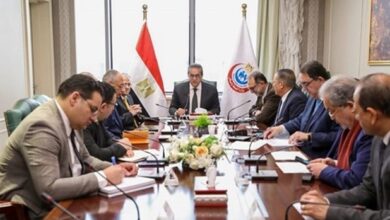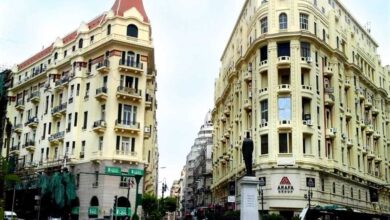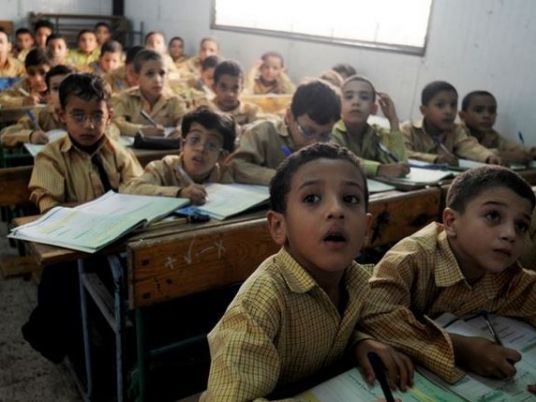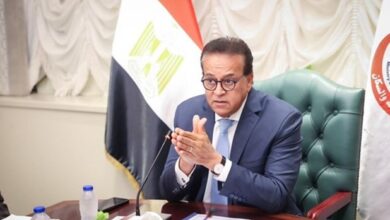On the evening of 23 July, a rock landed on Mohamed Mohsen's head during clashes between residents of Cairo’s Abbasseya neighborhood and protesters marching toward the headquarters of the ruling Supreme Council of the Armed Forces (SCAF). Twelve days later on 3 August, Mohsen died at the Nasser Institute Hospital from hemorrhaging in his brain. He was 23 years old.
Aside from the rock that struck him, Mohsen's friends and advocates have identified two other major factors that contributed to his death: an anti-protester propaganda campaign by Egypt's military rulers and a healthcare system incapable of delivering effective emergency care.
Mohsen's fellow activists are now in the process of suing the Health Ministry, SCAF and the woman who threw the rock that killed him, seeking justice for the unnecessary death of their friend.
A night of chaos
On 22 July, Major General Hassan al-Ruweiny, a member of the SCAF, publicly accused the April 6 Youth Movement, a revolutionary organization, of receiving funds from foreign sources and attempting to divide the people and the army. His provocative remarks prompted some activists who had been holding a sit-in at Tahrir Square to organize a protest march to the military’s headquarters.
Zeinab Abul Magd, an activist who had befriended Mohsen during their work together in Upper Egypt, walked to the protest with Mohsen and a few other mutual friends. They were unaware of the trap that had been set, with residents on edge and most roads leading to Abbasseya's central square blocked off.
As they approached at around 6:30 pm, they saw people throwing rocks and Molotov cocktails at the protesters. “I told [Mohsen], 'Mohamed don't go in,' because he was young, and sick already,” Abul Magd says. But Mohsen joined the fray anyway.
Mohamed Waked, an activist with the National Front for Justice and Democracy, describes the chaotic scene, remembering that he saw a woman on top of her apartment building throwing “heavy rocks, like ones that could kill.”
Abul Magd says that about an hour into the protest, at 7:30 pm, Mohsen was struck on the head and began to bleed profusely. But by then, the military and security forces had blocked the protesters' remaining escape routes, cordoning off the remaining streets and a passageway through the nearby Al-Nour mosque.
Mohsen's only option for treatment, then, was Ain Shams University Hospital, commonly known as Demerdash, which is located near where the attack took place. Yet some activists question whether the hospital was committed to helping the protesters.
"They refused to give us stretchers,” says Jane Lomil, a sixth-year medical student and activist. This forced the activists to carry injured protesters nearly 1.5 kilometers to the hospital's emergency department.
“I saw about ten people taken to the Demerdash hospital, but they asked to be dropped off in front and then walked home,” remembers activist Nour Eddin Tarek Mansour, explaining that the hospital was notorious for letting patients be arrested by security forces during the 18-day uprising back in January.
Abul Magd and Mohsen's friends decided that they would take him to a different hospital. At around 9:30 pm, the military began to launch tear gas into the square, forcing protesters to push through the security cordon in the mosque and escape. They arrived on a side street where most of the remaining injured were treated in waiting ambulances.
This type of treatment would not suffice for Mohsen, whose condition was rapidly deteriorating. Abul Magd and two other friends loaded him into their car and began to search for a hospital.
Botched response
Accounts of the emergency response to the fighting in Abbasseya suggest that a dangerous combination of incompetence and political retribution ultimately led to Mohsen's death.
During the uprising last winter, Lomil recalls, “There was no difference between an injured protester, or an injured policeman, or an injured thug, or whatever; everyone was treated there,” in Tahrir Square.
But the protest in Abbasseya was lacking in any kind of medical care. Activists recall seeing only one or two ambulances in the square during the clashes, treating people on-site.
"On 9 March and 8 and 9 April, and at all the events that had clashes that had the military cracking down on protesters at Tahrir, and many injured, medical service was slow and usually would not come,” says Nadeem Mansour, an activist with the Egyptian Center for Economic and Social Rights.
Instead, witnesses say, ambulances were being used to transport military police around the area.
"I think the most important thing is that using ambulances transporting military police rather than giving medical service is a crime,” Nadeem Mansour says, adding that this criminal misuse of ambulances is nothing new.
Fortunately, most of the injuries were capable of being treated by the ambulances in the square. But Abul Magd knew that Mohsen would need more serious treatment.
"First we went to the Coptic Hospital,” recalls Abul Magd. “And they were indifferent and negligent. They didn't care. They told us you have to take him to Al-Hilal Hospital for a CT scan.”
At Al-Hilal Hospital, doctors performed a CT scan on Mohsen and informed his friends that he needed an operation immediately. However, the hospital told Abul Magd that they had no beds available.
"They put him in the hallway for a half-hour or so, with no air conditioning, on a stretcher,” she recalls.
Abul Magd remembers seeing police and military officers standing in the hallway at Al-Hilal; she figures that they knew Mohsen had been injured at the Abbasseya protest. She thinks the hospital staff “probably” felt intimidated.
When she asked the hospital staff if she and her friends could use an ambulance to transport Mohsen to another hospital, Abul Magd says the staff told them to use their car instead.
"If you are putting someone with a brain injury in a car seat, is he sitting right?” she asks, unable to mask her frustration and anger. “They didn't even care enough to tell us how to have him sit. And none of us are doctors. We have no medical training.”
"They are doing this type of thing every day,” she adds.
Abul Magd and Mohsen's other friends then tried to get him into private hospitals, but they found that none had beds available. By this time, Mohsen had been injured for over three hours. He was eventually taken to Nasser Institute Hospital and rushed into surgery, but it was too late.
He fell into a coma.
A fight for justice
Two weeks after the assault, the demonstrators are taking action, suing the Health Ministry over the medical breakdown that contributed to Mohsen's death.
In front of the Health Ministry building on the morning of 7 August, about 15 activists from the National Front for Justice and Democracy, the political group that is spearheading the legal campaign on Mohsen's behalf, gather to submit a joint complaint to the minister about Mohsen's lack of treatment.
Abul Magd explains that the day before, she and the two others who transported Mohsen gave eyewitness accounts to an investigation committee at the ministry, and submitted a formal complaint to the minister's office. As she hands out copies of the complaint to the other National Front activists, she says that they plan to submit it again Sunday as a collective complaint.
On 5 August, Amr Helmy, Egypt's newly appointed interim health minister, announced the formation of a committee to investigate Mohsen's death, emphasizing that any medical workers found negligent would be punished.
The Health Ministry was unavailable for comment for this story.
The activists, though, are pursuing their own legal recourse, aside from the formal ministry investigation.
"We filed a complaint [at the Abbasseya police station on 4 August] against Hassan al-Ruweiny, who incited the people of Abbasseya against the protesters,” Abul Magd says. “And against the military council for inciting the people of Abbasseya, and against the military police that closed the square and prevented us from carrying [Mohsen] to a nearby hospital.”
Mohsen's cousin Mansour al-Sayeh says the family has now entrusted the activists to achieve justice for their loved one. Sayeh is now back in Aswan, where Mohsen was buried last Friday.
"They are not thinking about anything except [Mohsen],” he says of the family. “They are not thinking about what killed him, or who killed him, or the revolution, or anything else. They are now healing their wounds.”
Abul Magd says thousands gathered for Mohsen's funeral in Aswan's train station square, where most revolutionary protests have taken place in the city. She says the size of the funeral was “unprecedented.”
“Aswan never saw such a thing before,” says Abul Magd.
She also angrily explains to Al-Masry Al-Youm that the military in Aswan had the temerity to ask to march at the front of Mohsen's funeral procession.
"If you do this, then you admit he was a martyr,” she says, claiming that the military withdrew its request after the activists threatened to escalate tensions.
Her anger subsides, though, when she talks about the type of person Mohsen was.
"He was a very decent and humble and polite kid, who was very dedicated to do anything,” she says. She goes on to describe how he became involved in politics before the revolution, working for Mohamed ElBaradei's presidential campaign and collecting signatures for the National Association for Change.
Before entering the Health Ministry to file the joint complaint, Abul Magd remembers that as they approached Abbasseya, she told her friend – half joking – that they were going to be killed.
He replied: “There couldn't be a better way to die than for Egypt.”




